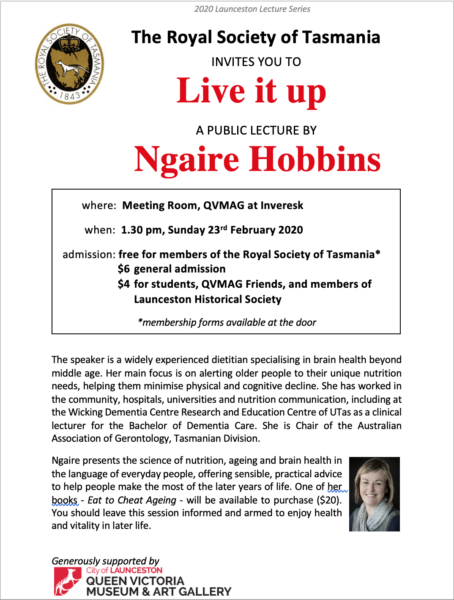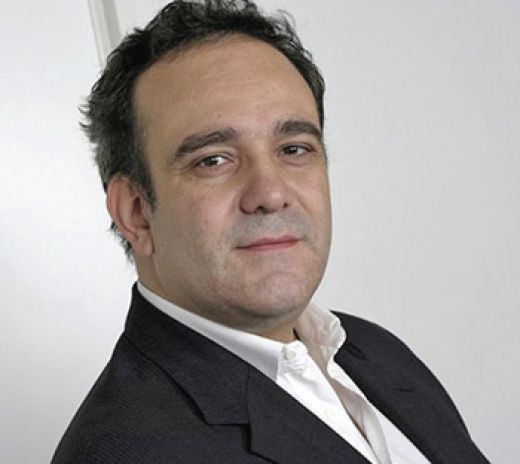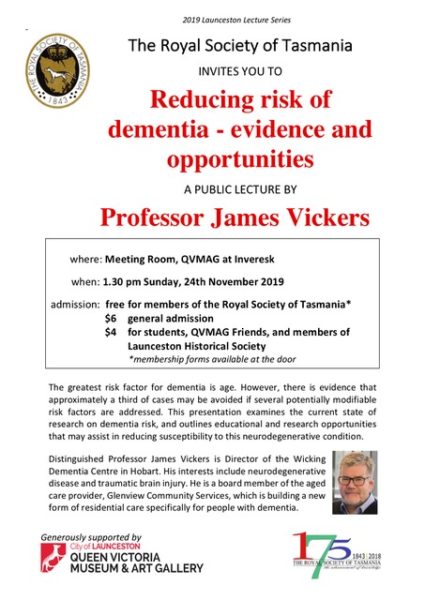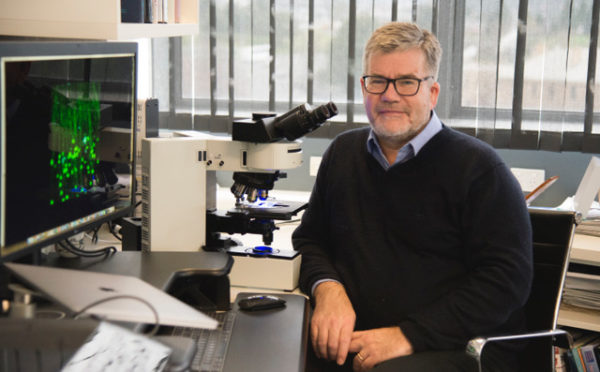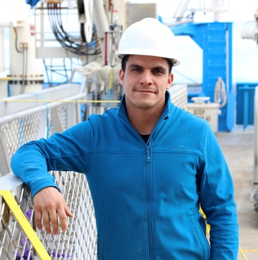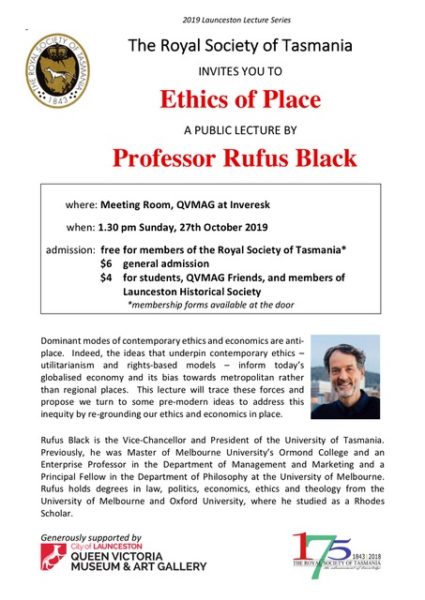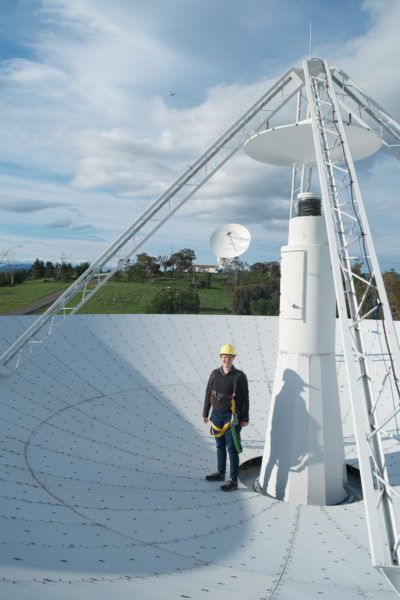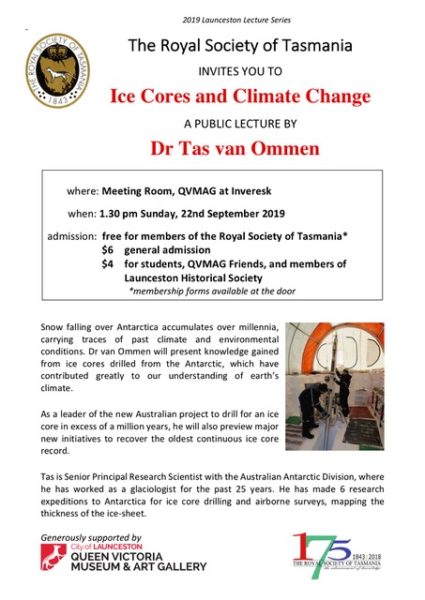Ngaire Hobbins, Chair of the Tasmanian division of Australian Association or Gerontology, presents a lecture on the science of nutrition, ageing and brain health in ordinary language. She offers sensible, practical advice to help people make the most of later life. 23 February, 1.30pm.
Notice of Annual General Meeting – 1 March 2020
Royal Society of Tasmania
Annual General Meeting and Lecture – Sunday 1st March
The Annual General Meeting of the Royal Society of Tasmania will be held on Sunday 1 March 2020 at 3 pm at the new location, The Old Woolstore Hotel lecture theatre, 1 Macquarie Street.
Nominations for positions on the Royal Society of Tasmania Council are now open for election at the Annual General Meeting.
The following positions are open for nomination:
Three Council Members (3 and 1 years)
Student Member (3 year)
Early Career Researcher (3 years)
Honorary Secretary (1 year)
Honorary Treasurer (1 year)
President (2 years maximum)
Vice President (2 years maximum)
Nominations must be received by midnight on Saturday 22rd February 2020.
A copy of the nomination form can be downloaded here.
Copies may also be obtained from the RST office, Wednesdays 9:00am through 12 noon.
The completed and signed form may be returned by mail to:
The Returning Officer c/- The Royal Society of Tasmania
GPO Box 1166 Hobart TAS 7001
Deliver to the office, 19 Davey Street Hobart TAS 7001
or a signed and scanned copy may be emailed to:
royal.society@tmag.tas.gov.au
For further information please contact the Honorary Secretary, David Wilson on 0409 854 101.
Ω
Following the AGM, Prof. Jean-Philippe Beaulieu will present a lecture entitled
The Secret Garden at Recherche Bay,1792
All members and friends are invited to attend.
Dr Jean-Philippe Beaulieu holds the inaugural David Warren Endowed Chair of Astrophysics at the University of Tasmania. Previously he was the Directeur de recherche CNRS, Institut d’Astrophysique de Paris in France.
Dr Beaulieu’s illustrious research career includes the 1996 Louis Armand Prize from the French Academy of Science. He is part of numerous major international collaborations and is co-lead investigator on the European Space Agency ARIEL mission, a space telescope planned for launch in 2028.
Dr Beaulieu has long collaborated with researchers in Tasmania and is a co-author of the 2016 publication, Secret Garden at Recherche Bay – 1792. The book tells the story of Felix Lahaye, a gardener with Admiral Bruni d’Entrecasteaux’s French expedition, and the garden he created at Recherche Bay.
Admission: free for members of The Royal Society of Tasmania *
$6 general admission
$4 for students and Friends of TMAG
* membership forms available at the door
2020 Lecture Calendar – Hobart
LECTURE MEETINGS ARE POSTPONED UNTIL FURTHER NOTICE. DIGITAL LECTURES ARE PLANNED. CHECK BACK FOR UPDATES.
The Royal Society of Tasmania
Hobart lecture program for 2020:
We are pleased to present the Hobart lecture program for 2020. As usual, there is something for everyone and everything of value and interest to inquiring minds of all persuasions.
We would also like to announce a change to the session time for the Hobart lectures. It has been decided to hold the lectures on Sunday afternoons at 3 pm (except where otherwise indicated). We hope that you will all find this convenient and an enlightening way to spend a Sunday afternoon.
Here is the calendar of speakers commencing in May. We look forward to seeing you there. Your feedback is always welcome.
17 May: Dr. E. Doddridge on the oceanography of the Southern Ocean (This is our first ZOOM online & recorded lecture)
5th July: MR Banks medallists – Associate Professor Arko Lucieer & Dr Eloise Foo
2nd August: TMAG Culture Curator Kirstie Ross: ‘In pursuit of Tasmania’s West: A curator’s view’
6th Sep: Clive Lord medallist – Prof. Jamie Kirkpatrick
4th October: Doctoral award winners – Dr Indrani Mukherjee and Dr Jessica Ericson
8th Nov: Post graduate afternoon
1st Dec, Christmas Dinner Lecture by Dr John Willaimson – Hobart’s Antarctic Connection – CSIRO Lecture Theatre
* Please check back for updates *
https://commons.wikimedia.org/wiki/File:Pegasus_Mountains,_Antarctica.jpg
Prof James Vickers – November at QVMAG
Post Grad night – November at TMAG
The Royal Society of Tasmania
presents
Post Graduate Night
at the Royal Society Rooms
Customs House, Dunn Place, Hobart
on Tuesday, 5 November 2019
Ο
Our speakers for the evening are: Luisa Fitzpatrick, Habacuc Pérez-Tribouillier and Patrick Yates.
Their subjects range from lizards’ tails and black holes, to uses of radioactivity in studying the oceans.
∇
Luisa Fitzpatrick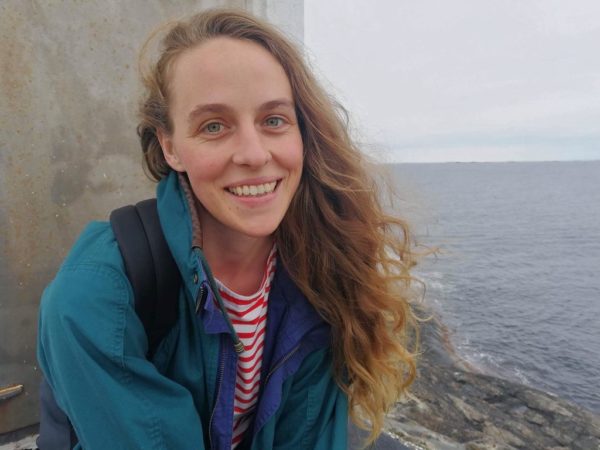
Tail Loss and Telomeres in Lizards
Luisa studied an undergraduate degree in Marine Biology and Zoology at the University of Western Australia, where she then undertook her honours degree looking at sperm competition inbreeding in guppies with Professor Jon Evans and Dr Clelia Gasparini. She worked for an environmental consulting company for a few years and at the Western Australian Museum, then moved to Tasmania to begin a PhD in the evolutionary ecology of lizards with Associate Professor Erik Wapstra and Dr Geoff While. Her thesis work focusses on senescence in ectotherms and the links between telomeres, temperature, reproduction and life history using the Tasmanian lizard Niveoscincus ocellatus as a model system. During her PhD, Luisa spent 6 months working with Professor Mats Olsson and Dr Angela Pauliny at the University of Gothenburg in Sweden, attended several international conferences, was involved in organising and hosting several national conferences in Tasmania and helped with field work on wall lizards in Italy.
Abstract: One aspect of lizard ageing Luisa is particularly interested in is their ability to regenerate large portions of their body. Telomeres are protective caps on DNA that shorten with cell division and oxidative stress. Tissue regeneration such as regrowth of a body part may influence an organism’s telomere length as growth can increase both cell division and oxidative stress. Examining the effect of tail regrowth on telomeres in a lizard, Luisa and colleagues found that telomeres lengthened in lizards with intact tails while oxidative stress decreased in those re-growing tails. This suggests that tail regeneration involves a response to oxidative stress which comes at a cost to telomere repair. This change in telomere maintenance demonstrates a potential long-term cost of tail regeneration.
Habacuc Pérez-Tribouillier
It’s not only bad news: how radioactivity is used to study the ocean
Habacuc has been interested in the ocean since an early age, spending long days in the tropical beaches of southern Mexico and then studying a bachelor degree in oceanography and a M.Sc. in marine geochemistry. During his masters, Habacuc worked alternatively as a guide taking tourist to snorkel with the whale shark in La Paz, Mexico. In 2015 he moved to Hobart to start a PhD in the Institute for Marine and Antarctic Studies with Dr Zanna Chase, Taryn Noble, Ashley Townsend and Andrew Bowie. As part of his PhD, he got involved in the analytical side of oceanography, developing a technique to measure radioactive elements in seawater at extremely low concentrations. Recently he submitted his thesis and now he is working as a research assistant for Dr Taryn Noble at IMAS. When he is not in the lab, or in front of the computer, you might very likely find him SCUBA diving or spearfishing somewhere on the Tasmanian coast.
Abstract: Since radioactivity was discovered towards the end of the 19th Century, it had a big impact on society. Many of us think of radioactivity as something negative (fair enough). However, it represents an incredibly useful tool to study how our Planet works! In this talk, I would like to introduce you to the basic concepts of radioactivity and how they are applied to study the ocean. Then I will tell you how I applied it to study the Southern Ocean. The Southern Ocean is the largest high nutrient, low chlorophyll region in the global ocean. In these regions, phytoplankton growth is minimum despite the abundance of nutrients (let’s remember that phytoplankton is like the plants of the ocean). The cause of this is because most of the Southern Ocean is iron deficient. When iron reaches these “anaemic” regions, big “blooms” of phytoplankton extending for thousands of square kilometres appear. These blooms have the potential of absorbing atmospheric CO2and if the conditions are right, to transport in into the deep ocean, thus having a potential impact on climate regulation. In my thesis, I used thorium and neodymium isotopes to investigate how iron reaches and fertilizes the remote region of the Kerguelen Plateau. This region hosts the largest bloom in the Southern Ocean and also Australia’s only active volcano.
Patrick Yates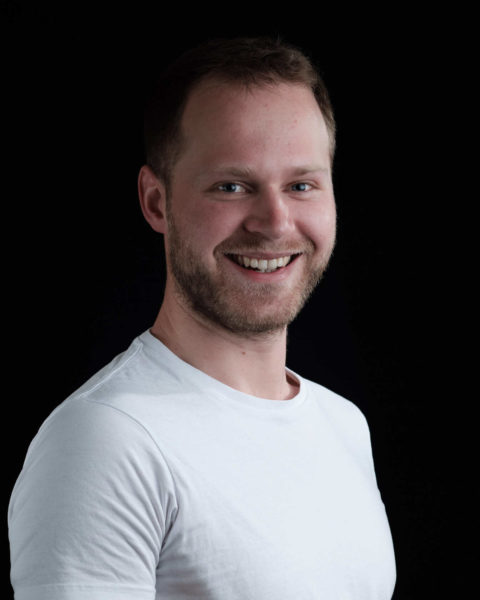
Black holes & galaxy evolution in under 20 minutes
Patrick completed his Bachelor of Science at the University of Tasmania (UTAS), majoring in Physics and Applied Maths, before continuing his studies with an honours degree supervised by Dr. Stanislav Shabala and Dr. habil. Martin Krause. His honours topic was studying how black holes in the centre of massive galaxies modulate their impact on their host environment. Patrick was unable to escape the pull of black holes, and returned to UTAS to study a PhD, again supervised by Dr. Stanislav Shabala and Dr. habil. Martin Krause. His main area of research is modelling the effect black holes have on their host galaxy as a function of different environments. As part of his PhD studies, Patrick spent 3 months working with Prof. Martin Hardcastle and Dr. habil. Martin Krause at the University of Hertfordshire in England, attended the XXXth International Astronomy Union General Assembly in Vienna, and attended several national and international conferences and workshops.
Abstract: At the center of nearly every massive galaxy cluster lies a supermassive black hole, so dense that not even light can escape it’s gravitational pull. Surrounding this supermassive black hole is an accretion disk, formed as matter spirals inwards onto the black hole. The supermassive black hole, accretion disk, and region immediately surrounding the two are called the Active Galactic Nucleus (AGN) of a galaxy, and are thought to play a key role in how galaxies evolved into what we can observe today.
In this talk I will focus on radio jets, which are superheated and relativistic jets of plasma launched from the accretion disk that punch through the environment and can produce structures 10 times larger than the diameter of our own galaxy, the Milky Way. In particular I will look at how these radio jets are formed, how they grow to such large sizes, and how their violent passage through the environment is responsible for maintaining the delicate balancing act that prevents the catastrophic collapse of galaxy clusters. In my research I have developed state-of-the-art numerical simulations of these jets launched into realistic galaxy cluster environments, offering the perfect laboratory setting in which to quantify and model their effects on the host environment, and apply these findings to observations. One of the key findings from my research is the need to understand and accurately model the galaxy cluster environment in order to interpret the increasing number of radio jet observations.
October at QVMAG – Rufus Black
Prof. Rufus Black, Vice Chancellor and President of the UTAS, delivered his lecture on the “Ethics of Place” on Sunday 27th October 2019, at the Queen Victoria Museum and Art Gallery, Inveresk. CLICK HERE TO LISTEN TO THE AUDIO
Christmas Lecture – Dr Alison Alexander – Maria Lord: from convict to Governor’s lady
In case you hadn’t noticed, Christmas is just around the corner.
 The Royal Society of Tasmania
The Royal Society of Tasmania
will present the Christmas Lecture on
Tuesday 3 December 2019
at CSRIO Lecture Theatre
Castray Esplanade, Battery Point
.
We are delighted to announce that our 2019 Christmas speaker is the renowned Tasmanian historian and author
,
Dr Alison Alexander
.
The topic draws from the one of her earlier and most popular works:
¢
¢
§
The lecture will be followed by a two-course buffet meal.
Click here for your invitation to the dinner: 2019 Christmas Dinner Invitation
Bookings close 20 November 2019
Click here to view the Christmas Function Dinner Menu.
2019 Peter Smith medal – Dr Lucia McCallum at TMAG
The Royal Society of Tasmania
presents
the Innaugral Peter Smith medal lecture by
Dr. Lucia McCallum
on Tuesday, 1 October 2019
at the Royal Society of Tasmania lecture room,
Customs House, Dunn Place, Hobart
The Dish redux – from the Apollo Mission to Earth surveying
Whether we are talking about climate change, sea level rise or the exploration of natural resources, “Earth measurement” and “precise positioning” have long found their way into our daily vocabulary. Fundamental to all those applications is an accurate, stable, and accessible coordinate system. Today’s best coordinate reference is generated from a multitude of modern Earth surveying techniques, one of them making use of black holes as the most stable pillars of the Universe.
The Hobart radio telescope, once designed as part of the Apollo Missions, nowadays plays a crucial role to measure our dynamic Earth. This is a diverse task of managing old and new technology, establishing truly global collaboration, and performing innovative research delivering encouraging results.
Dr Lucia McCallum is a post-doctoral Research Fellow at the Physics Department of the University of Tasmania. She is a geodesist – or Earth surveyor – with a proven record in the Very Long Baseline Interferometry (VLBI) technique. Her main research interests are global reference frames, Earth rotation, and the emerging field of space ties.
Following a surveying degree, she performed her doctoral studies in Geodesy at TU Wien, Austria. Her first post-doc appointment led her to Hobart in 2014, where she now has settled with her young family. In 2015, she was awarded the Erwin-Schrödinger Fellowship by the Austrian Science Fund, and in 2017 she received a Discovery Early Career Research Award (DECRA) from the Australian Research Council. She is now the winner of the inaugural Peter Smith Medal.
ψ The Peter Smith Medal was established in 2017 and is awarded biennially to an outstanding early career researcher in any field. The winner receives a medal and delivers “The Peter Smith Lecture” to the Society. To be eligible for nomination, the research and/or works must be largely carried out in Tasmania or under the aegis of a Tasmanian-based organisation and within the Society’s purview. The Award is not restricted to Australian nationals. The medal will be open for nominations again in 2020.
September at QVMAG – Dr Tas van Ommen
September at TMAG – Dr Anita Hansen
The Royal Society of Tasmania
presents
Dr. Anita Hansen
Creating History: how does a settler society create its own independent history and identity?
Tuesday, 3 September 2019
8.00pm in the Royal Society Rooms,
Customs House Building, Dunn Place, Hobart
Ω
This is a companion to last month’s lecture by Marley Large, Snapshots of 175 Years of The Royal Society of Tasmania’s Minutes which looked at The Royal Society of Tasmanian’s history through its Minute Books.
The Royal Society of Tasmania developed the government gardens into a true botanical gardens and created a museum that was to become the Tasmanian Museum and Art Gallery, as well as starting a wonderfully eclectic library: WHY?
This 175th anniversary of The Royal Society of Tasmania is a time to look, not only at the physical and scientific achievements of the Society, also at the cultural and historical legacy of the Society to Tasmania and Tasmanians as we moved from an English penal colony to the vibrant cultural centre that is Tasmania today.
Born in Denmark, Dr Anita Hansen moved to Australia with her family as a child. Her artist mother was fascinated by the exotic plants and animals of their new home and taught Anita to draw them. Anita has worked as an artist all her life – in Tasmania, interstate and overseas. She holds a doctorate from the University of Tasmania (Nineteenth century natural history art and belonging in Tasmania), a Master of Fine Arts (Orchid Illustrations of William Archer 1847–1874), a Graduate Diploma in Plant and Wildlife Illustration (University of Newcastle) and a Bachelor of Fine Art degree (University of Tasmania). Anita received a Fellowship with the Cultural Studies Department at the University of Toronto.
Anita co-edited The Royal Society of Tasmania’s books The Library at the End of the World: Natural Science and Its Illustrators and Poles Apart: Fascination, Fame and Folly, also writing about the artists whose illustrations were featured in the books. She has published a number of journal articles. Anita has curated a number of exhibitions in Tasmania and interstate, recently curating exhibitions for The Royal Society of Tasmania’s 175th anniversary (Louisa Anne Meredith: a remarkable woman, Poles Apart: Fascination, Fame and Folly) and was on the Steering Committee for the DINOSAUR rEVOLUTION exhibition, as co-ordinator of The Royal Society of Tasmania’s 175 anniversary committee.

